Politics
Second US appeals court rejects Trump’s order curtailing birthright citizenship
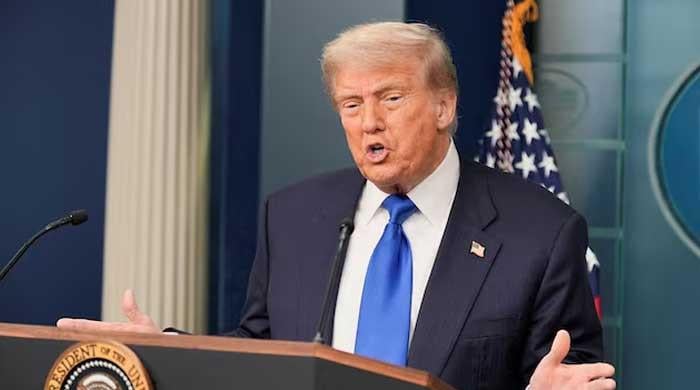
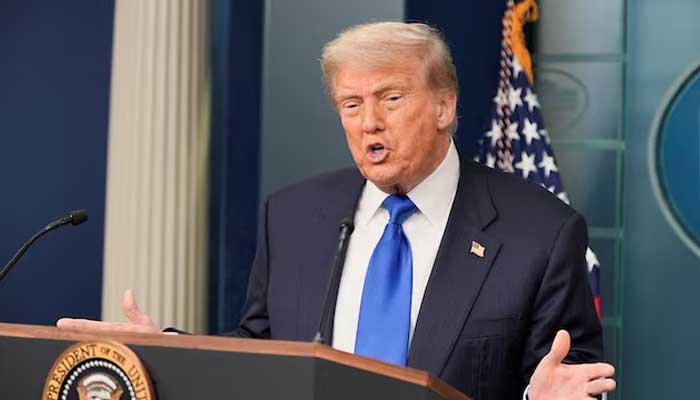
- 1st Circuit upholds nationwide injunction blocking policy.
- 9th Circuit similarly held Trump’s order is unconstitutional.
- Trump administration wants Supreme Court to decide the issue.
President Donald Trump’s effort to curtail birthright citizenship was declared unconstitutional by a second US appeals court on Friday, handing him another defeat on a core piece of his hardline immigration agenda whose ultimate fate may lie with the US Supreme Court.
A three-judge panel of the Boston-based 1st US Circuit Court of Appeals upheld injunctions won by Democratic-led states and immigrant rights advocates that have stopped the Republican president’s executive order from taking effect nationwide.
Trump’s order, issued on his first day back in office on January 20, directs agencies to refuse to recognise the citizenship of US-born children who do not have at least one parent who is an American citizen or lawful permanent resident, also known as a “green card” holder.
US Circuit Judge David Barron said Trump’s order violated the US Constitution’s 14th Amendment, which states that anyone born in the United States is considered a citizen. He said the length of the court’s 100-page ruling should not be mistaken for a sign that the fundamental question was difficult.
“It is not, which may explain why it has been more than a century since a branch of our government has made as concerted an effort as the Executive Branch now makes to deny Americans their birthright,” Barron wrote in an opinion joined by two judges similarly appointed by Democratic presidents
White House spokesperson Abigail Jackson said the court had misinterpreted the 14th Amendment.
“We look forward to being vindicated by the Supreme Court,” she said in a statement.
The 1st Circuit was reviewing rulings by US District Judges Leo Sorokin in Boston and Joseph Laplante in Concord, New Hampshire, who earlier this year in separate cases blocked Trump’s order from being implemented.
The 1st Circuit’s decision came after another appeals court, the San Francisco-based 9th US Circuit Court of Appeals, in July similarly upheld a nationwide injunction blocking Trump’s order from taking effect on the grounds that it violated the citizenship clause of the 14th Amendment.
The administration last week asked the US Supreme Court to hear its appeal in that case and a related one. If the Supreme Court agrees, it would mark the second time the litigation is before the high court, after its 6-3 conservative majority in June limited the power of judges to block that and other actions by Trump on a nationwide basis.
The Supreme Court at that time did not weigh in on the validity of Trump’s birthright citizenship order. But in three cases where judges had declared it unconstitutional, the court limited the ability of judges to issue so-called universal injunctions and directed lower courts that had blocked Trump’s policy nationally to reconsider the scope of their orders.
The Supreme Court’s ruling opened the door to Trump’s order taking effect in parts of the country. Yet judges have repeatedly since then kept blocking it nationwide.
Those judges include Sorokin, who reaffirmed his original decision to halt the policy nationwide, and Laplante, who issued a new injunction in a newly-filed nationwide class action, a vehicle the Supreme Court’s ruling suggested was permissible.
Politics
Japan’s Takaichi set to become country’s first female PM
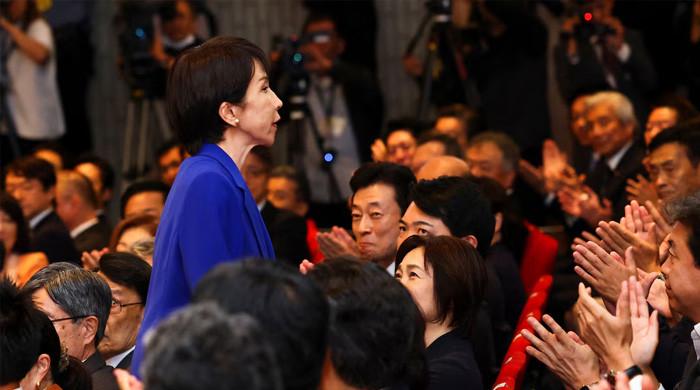
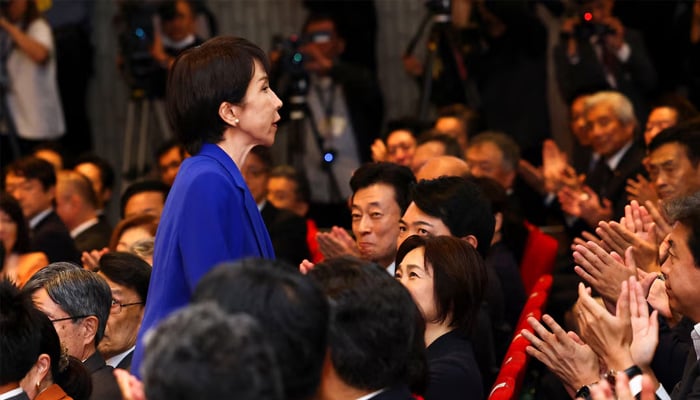
- Conservative nationalist, 64, picked to lead ruling party.
- Investors wary of spending designed to win back voters.
- Takaichi defeated moderate Koizumi, a political scion.
Japan’s ruling party picked conservative nationalist Sanae Takaichi as its new head on Saturday, putting her on course to become the country’s first female prime minister.
The Liberal Democratic Party elected Takaichi, 64, to regain trust from a public angered by rising prices and drawn to opposition groups promising big stimulus and clampdowns on foreigners.
The former internal affairs minister, a conservative nationalist with an expansionary agenda, is expected to replace Prime Minister Shigeru Ishiba since the LDP is the largest in parliament.
A vote in parliament to choose a prime minister is expected to be held on October 15.
Party in crisis
The new LDP president is likely to succeed Shigeru Ishiba as leader of the world’s fourth-biggest economy because the party, which has governed Japan for almost all the postwar period, is the biggest in parliament. But this is not assured as the party and its coalition partner lost their majorities in both houses under Ishiba in the past year.
Takaichi, the only woman among the five LDP candidates, beat a challenge from the more moderate Shinjiro Koizumi, 44, who was bidding to become the country’s youngest leader in the modern era.
A former internal affairs minister with an expansionary economic agenda, Takaichi inherits a party in crisis.
Various other parties, including the fiscally expansionist Democratic Party for the People and the anti-immigration Sanseito have been steadily luring voters, especially younger ones, away from the LDP.
“Recently, I have heard harsh voices from across the country saying we don’t know what the LDP stands for anymore,” said Takaichi in her speech before the second-round vote.
“That sense of urgency drove me. I wanted to turn people’s anxieties about their daily lives and the future into hope,” she added.
Takaichi, who says her hero is Margaret Thatcher, Britain’s first female prime minister, offered a starker vision for change than Koizumi and is potentially more disruptive.
An advocate of late premier Shinzo Abe’s “Abenomics” strategy to jolt the economy with aggressive spending and easy monetary policy, she has previously criticised the Bank of Japan’s interest rate increases.
Such a policy shift could spook investors worried about one of the world’s biggest debt loads.
Takaichi has also raised the possibility of redoing an investment deal with US President Donald Trump that lowered his punishing tariffs in return for Japanese taxpayer-backed investment.
Her nationalistic positions — such as her regular visits to the Yasukuni shrine to Japan’s war dead, viewed by some Asian neighbours as a symbol of its past militarism — may rile South Korea and China.
She also favours revising Japan’s pacifist postwar constitution and suggested this year that Japan could form a “quasi-security alliance” with Taiwan, the democratically governed island claimed by China.
If elected, Takaichi said she would travel overseas more regularly than her predecessor to spread the word that “Japan is Back!”
Takaichi is expected to hold a press conference around 0900 GMT.
Politics
Bid to end shutdown fails in Senate; US president freezes aid to Chicago
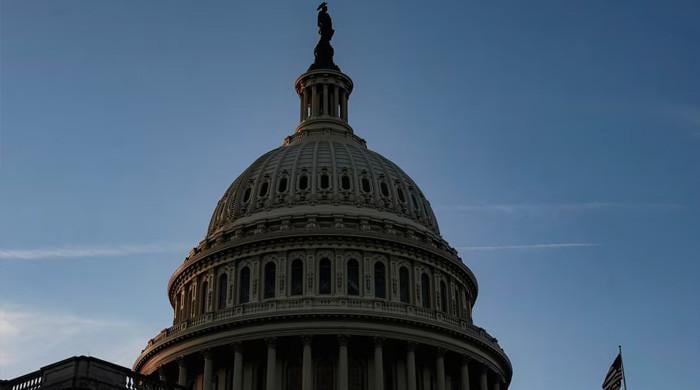
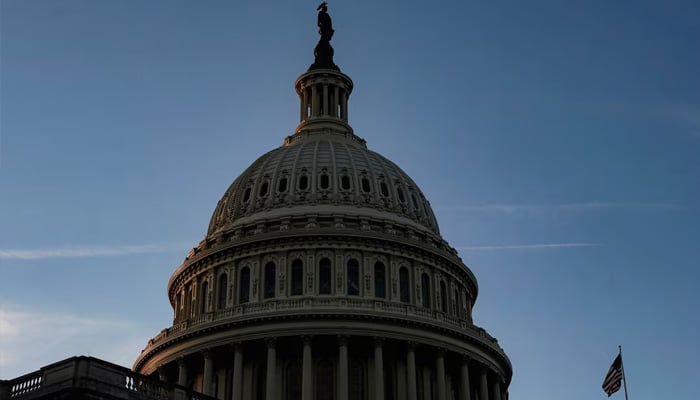
- Trump freezes at least $28bn in funds for Democratic areas.
- Pritzker says that amounts to hostage taking.
- Bid to reopen government fails in Senate as both sides dig in.
US President Donald Trump’s administration froze $2.1 billion in Chicago transit funding on Friday, starving another Democratic city of funds as a bid to end the government shutdown failed again in the Senate.
On the shutdown’s third day, Trump ramped up pressure on Democrats to end the standoff and agree to a Republican plan that would restore government funding. But that failed in a 54-44 Senate vote, short of the chamber’s 60-vote standard, ensuring that the shutdown will last until at least Monday.
The administration has now frozen at least $28 billion in funding for Democratic cities and states, escalating Trump’s campaign to use the extraordinary power of the US government to punish political rivals. Budget director Russ Vought said the Chicago money, earmarked for elevated train lines, had been put on hold to ensure it was not “flowing via race-based contracting.”
Trump has made Chicago, the nation’s third-largest city, a regular rhetorical punching bag and has threatened to send in National Guard troops.
Illinois Governor JB Pritzker, a high-profile Trump critic seen as a possible 2028 Democratic presidential candidate, said the funding freeze amounted to hostage-taking.
“It’s attempting to score political points but is instead hurting our economy and the hardworking people who rely on public transit,” he said on social media.
The White House said it was also identifying funds that could be withheld from Portland, Oregon, a left-leaning city that was home to high-profile protests during Trump’s first term.
Trump has also threatened to fire more federal workers, beyond the 300,000 he is forcing out this year, and dozens of agencies have submitted workforce reduction plans, according to a White House source speaking on condition of anonymity.
Concern about ‘bad-faith environment’
Many Republicans say they are not troubled by Trump’s pressure campaign, even though it undercuts Congress’ constitutional authority over spending matters. In addition to cutting funds to Democratic cities, Trump and his allies have taken to posting social media images with cartoon mustaches and sombreros drawn on his Democratic opponents.
“Is he trying to apply pressure?” House of Representatives Speaker Mike Johnson, a Republican, told reporters. “He probably is, yeah. And I applaud that.”
But others say the cuts are complicating efforts to reach a deal that would allow the government to reopen. “If you do that, you’re going to create a bad-faith environment here,” said Republican Senator Thom Tillis, who is involved in informal talks to end the impasse. Tillis has opted not to seek re-election next year.
Trump’s funding freeze so far has targeted transit and green-energy projects, two areas that are championed by Democrats. His administration has also tried to cut counterterrorism funding for Democratic states, which is typically a Republican priority. That has been temporarily blocked in court, and Trump restored $187 million in funding for New York on Friday.
No sign of swift solution
In Washington, the Senate rejected both the Republican funding plan and a Democratic alternative and then adjourned until Monday. The House of Representatives will be out of town all next week, which means it would not be available to vote on any compromise that emerges from the Senate.
If the shutdown stretches past Monday, it will become the fourth-longest in US history. The longest shutdown lasted 35 days in 2018-2019, during Trump’s first term in office.
Trump’s pressure campaign did not appear to sway Democrats. Only three voted for the Republican plan, which would extend funding through November 21, the same number who backed it in earlier votes.
Democrats say any funding package must also expand pandemic-era healthcare subsidies due to expire at the end of December, while Republicans say that issue should be dealt with separately. Those subsidies were passed as part of a 2021 Democratic COVID relief package and now help 24 million Americans pay for coverage. Nearly 8 in 10 Americans support keeping them in place, according to a Kaiser Family Foundation poll.
The standoff has frozen about $1.7 trillion in funds for agency operations, which amounts to roughly one-quarter of annual federal spending. Much of the remainder goes to health and retirement programs and interest payments on the growing $37.5 trillion debt.
Services interrupted
The shutdown, the 15th since 1981, has suspended scientific research, financial regulation, and a wide range of other activities. Pay has been suspended for roughly 2 million federal workers, though troops, airport security screeners, and others deemed “essential” must still report to work.
On Friday, the government did not release its monthly unemployment report, leaving Wall Street guessing about the health of the world’s largest economy.
A prolonged shutdown could disrupt air travel and food aid for millions of Americans, and also force federal courts to close. Federal workers would miss their first paycheck in mid-October if the standoff is not resolved by then.
Politics
Comparing Hamas response with Trump’s Gaza plan
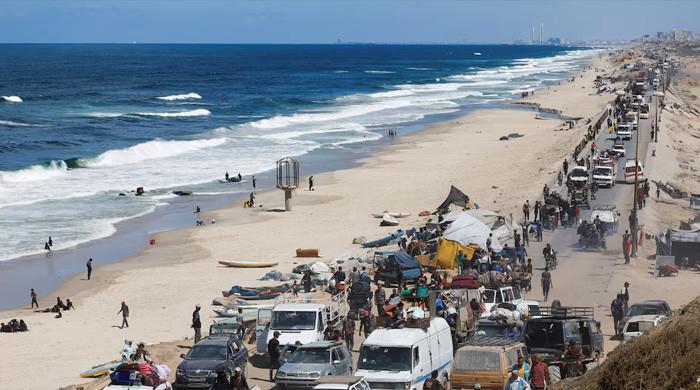
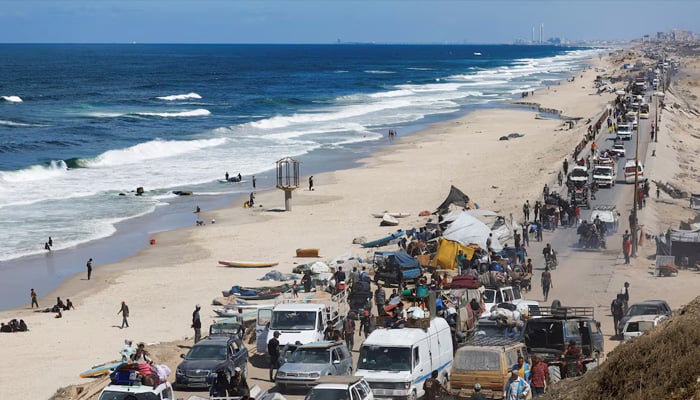
Hamas responded on Friday to President Donald Trump’s plan for Gaza’s future, including ending Israel’s war in the enclave.
The resistance group, fighting for the Palestinian freedom, accepted certain key parts of the Trump plan, including ending the war, Israel’s withdrawal, the release of Israeli hostages and Palestinian captives, aid and recovery efforts, and an opposition to Palestinian expulsion from the territory.
There were apparent differences in Hamas’ statement and Trump’s plan on the future of Gaza’s governance and Hamas’ own involvement in the territory’s future. Hamas said it sought further talks.
A comparison of Hamas’ statement with Trump’s plan is below:
What does Hamas say it is open to accepting in Trump’s plan?
Release of Israeli hostages and Palestinian captives:
Hamas said it would release Israeli hostages in Gaza both living and dead “according to the exchange formula contained in President Trump’s proposal, with the necessary field conditions for implementing the exchange.”
It did not specify what it meant by “necessary field conditions.” The militant group said it was ready to immediately have talks through mediators to discuss further details.
The Trump plan says all hostages will be returned by Hamas “within 72 hours of Israel publicly accepting this agreement.”
Trump’s proposal said that thereafter, Israel will free 250 Palestinian prisoners serving life sentences, plus 1,700 Gazans arrested since October 7, 2023, including all women and children. For every Israeli hostage whose remains are released, Israel will release the remains of 15 dead Gazans, the Trump plan says.
Ceasefire, end of war and Israeli withdrawal:
Hamas said it accepted the framework of an end to the war and Israel’s “full withdrawal” from the enclave. Hamas’ statement did not note any different stages of Israel’s withdrawal and said it rejected Israeli occupation.
The Trump plan said “Israeli forces will withdraw to the agreed upon line to prepare for a hostage release.” It said that during that time, Israel’s military assault, including aerial and artillery bombardment, will be suspended, and “battle lines will remain frozen until conditions are met for the complete staged withdrawal.”
Aid, recovery and no Palestinian expulsion:
Hamas welcomed that Trump’s plan urged a surge in aid into Gaza while not calling for Palestinians to be expelled from the territory.
The Trump plan said aid will be immediately sent into Gaza in quantities consistent with a January 19 agreement. It would also involve rehabilitation of infrastructure, hospitals and bakeries, and entry of necessary equipment to remove rubble and open roads. Aid will proceed through the United Nations, the Red Crescent and other international institutions under the plan.
Hamas said it rejected Palestinian displacement from Gaza. The Trump plan said that “no one will be forced to leave” and those who wish to leave will be free to return. The Trump plan encouraged Palestinians to stay in Gaza.
Where does Hamas appear to be at odds with Trump’s plan?
Foreign involvement in Gaza’s interim governance:
The Trump plan said “Gaza will be governed under the temporary transitional governance of a technocratic, apolitical Palestinian committee,” though it does not identify any Palestinian individual or group by name as being involved in the transition.
The Trump plan says the panel would be supervised by a new international transitional body that Trump would head and which would include other members, including former UK Prime Minister Tony Blair.
Hamas said it would agree to hand over Gaza’s administration “to a Palestinian body of independents (technocrats) based on Palestinian national consensus and supported by Arab and Islamic backing.” Hamas has previously offered to hand over Gaza’s administration to a different body.
Hamas did not comment on the proposed deployment of a “temporary International Stabilisation Force” in Gaza under the Trump plan for which the US will work with Arab partners.
Hamas having no role in Gaza’s future:
The Trump plan said Hamas will “agree to not have any role in the governance of Gaza, directly, indirectly, or in any form.” The plan also said there will be a “process of demilitarisation of Gaza.”
Hamas maintained in its response that the militant group sees itself as part of a “comprehensive Palestinian national framework.” Its Friday statement did not comment on demilitarising. It has previously rejected such calls.
“This is tied to a collective national position and in accordance with relevant international laws and resolutions, to be discussed within a comprehensive Palestinian national framework, in which Hamas will be included and will contribute with full responsibility,” Hamas said on Friday.
The Hamas statement did not comment on the proposal in the Trump plan to give amnesty and safe passage to other countries for Hamas members who “decommission” their weapons.
-

 Tech1 week ago
Tech1 week agoCompact camera uses 25 color channels for high-speed, high-definition hyperspectral video
-

 Sports1 week ago
Sports1 week agoCubs’ Matt Shaw has epic game after Mets announcers criticize him for attending Charlie Kirk memorial
-

 Tech1 week ago
Tech1 week agoXiaomi’s New Phone One-Ups Apple’s iPhone Redesign With a Second Screen
-

 Tech1 week ago
Tech1 week agoAmazon Might Owe You $51. Here’s How to Find Out if You’re Eligible
-

 Tech1 week ago
Tech1 week agoSolar-powered system produces green hydrogen directly from air moisture
-

 Tech1 week ago
Tech1 week agoHow to (Mostly) Get Rid of Liquid Glass
-

 Tech1 week ago
Tech1 week agoBroadcast TV Is a ‘Melting Ice Cube.’ Kimmel Just Turned Up the Heat
-

 Tech1 week ago
Tech1 week agoHow the fraud protection system is wrongly brandishing thousands of innocent banking customers






